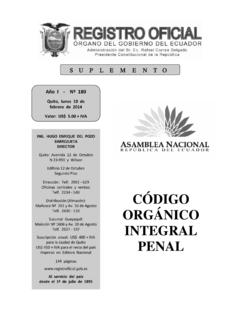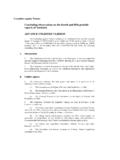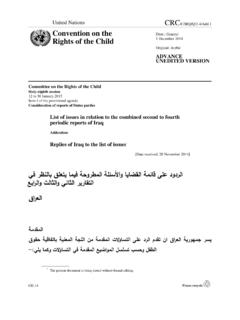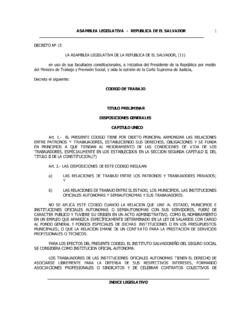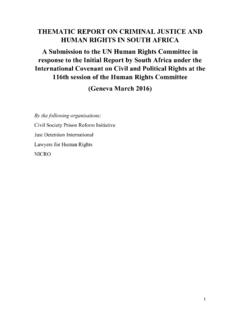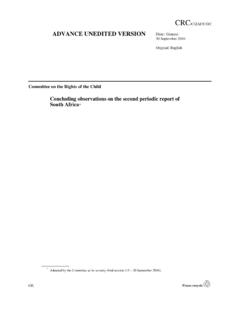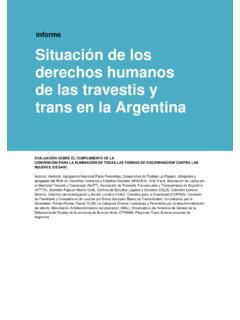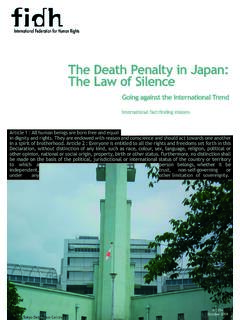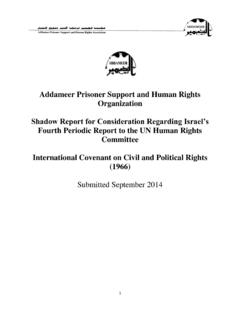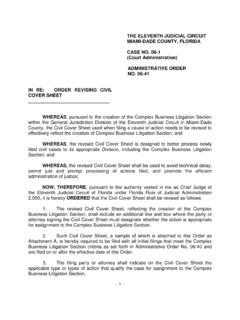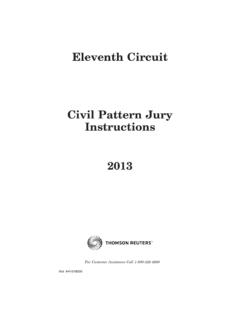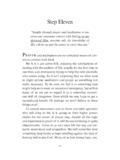Transcription of IV. GENERAL RECOMMENDATIONS ADOPTED BY …
1 IV. GENERAL RECOMMENDATIONS ADOPTED BY THE COMMITTEE ON THE elimination OF discrimination AGAINST women eleventh session (1992)** GENERAL recommendation No. 19: Violence against women Background 1. Gender-based violence is a form of discrimination that seriously inhibits women s ability to enjoy rights and freedoms on a basis of equality with men. 2. In 1989, the Committee recommended that States should include in their reports information on violence and on measures introduced to deal with it ( GENERAL recommendation 12, Eighth session). 3.
2 At its tenth session in 1991, it was decided to allocate part of the eleventh session to a discussion and study on article 6 and other articles of the Convention relating to violence towards women and the sexual harassment and exploitation of women . That subject was chosen in anticipation of the 1993 World Conference on Human Rights, convened by the GENERAL Assembly by its resolution 45/155 of 18 December 1990. 4. The Committee concluded that not all the reports of States parties adequately reflected the close connection between discrimination against women , gender-based violence, and violations of human rights and fundamental freedoms.
3 The full implementation of the Convention required States to take positive measures to eliminate all forms of violence against women . 5. The Committee suggested to States parties that in reviewing their laws and policies, and in reporting under the Convention, they should have regard to the following comments of the Committee concerning gender-based violence. GENERAL comments 6. The Convention in article 1 defines discrimination against women . The definition of discrimination includes gender-based violence, that is, violence that is directed against a woman because she is a woman or that affects women disproportionately.
4 It includes acts that inflict physical, mental or sexual harm or suffering, threats of such acts, coercion and other deprivations of liberty. Gender-based violence may breach specific provisions of the Convention, regardless of whether those provisions expressly mention violence. 7. Gender-based violence, which impairs or nullifies the enjoyment by women of human rights and fundamental freedoms under GENERAL international law or under human rights conventions, is discrimination within the meaning of article 1 of the Convention. These rights and freedoms include: ** Contained in document A/47/38.
5 (a) The right to life; (b) The right not to be subject to torture or to cruel, inhuman or degrading treatment or punishment; (c) The right to equal protection according to humanitarian norms in time of international or internal armed conflict; (d) The right to liberty and security of person; (e) The right to equal protection under the law; (f) The right to equality in the family; (g) The right to the highest standard attainable of physical and mental health; (h) The right to just and favourable conditions of work. 8. The Convention applies to violence perpetrated by public authorities.
6 Such acts of violence may breach that State s obligations under GENERAL international human rights law and under other conventions, in addition to breaching this Convention. 9. It is emphasized, however, that discrimination under the Convention is not restricted to action by or on behalf of Governments (see articles 2 (e), 2 (f) and 5). For example, under article 2 (e) the Convention calls on States parties to take all appropriate measures to eliminate discrimination against women by any person, organization or enterprise. Under GENERAL international law and specific human rights covenants, States may also be responsible for private acts if they fail to act with due diligence to prevent violations of rights or to investigate and punish acts of violence, and for providing compensation.
7 Comments on specific articles of the Convention Articles 2 and 3 10. Articles 2 and 3 establish a comprehensive obligation to eliminate discrimination in all its forms in addition to the specific obligations under articles 5-16. Articles 2 (f), 5 and 10 (c) 11. Traditional attitudes by which women are regarded as subordinate to men or as having stereotyped roles perpetuate widespread practices involving violence or coercion, such as family violence and abuse, forced marriage, dowry deaths, acid attacks and female circumcision. Such prejudices and practices may justify gender-based violence as a form of protection or control of women .
8 The effect of such violence on the physical and mental integrity of women is to deprive them of the equal enjoyment, exercise and knowledge of human rights and fundamental freedoms. While this comment addresses mainly actual or threatened violence the underlying consequences of these forms of gender-based violence help to maintain women in subordinate roles and contribute to their low level of political participation and to their lower level of education, skills and work opportunities. 12. These attitudes also contribute to the propagation of pornography and the depiction and other commercial exploitation of women as sexual objects, rather than as individuals.
9 This in turn contributes to gender-based violence. Article 6 13. States parties are required by article 6 to take measures to suppress all forms of traffic in women and exploitation of the prostitution of women . 14. Poverty and unemployment increase opportunities for trafficking in women . In addition to established forms of trafficking there are new forms of sexual exploitation, such as sex tourism, the recruitment of domestic labour from developing countries to work in developed countries, and organized marriages between women from developing countries and foreign nationals.
10 These practices are incompatible with the equal enjoyment of rights by women and with respect for their rights and dignity. They put women at special risk of violence and abuse. 15. Poverty and unemployment force many women , including young girls, into prostitution. Prostitutes are especially vulnerable to violence because their status, which may be unlawful, tends to marginalize them. They need the equal protection of laws against rape and other forms of violence. 16. Wars, armed conflicts and the occupation of territories often lead to increased prostitution, trafficking in women and sexual assault of women , which require specific protective and punitive measures.
